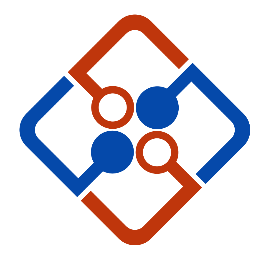A web development frameworks is a set of tools and libraries that allow developers to build web applications more easily. It provides a structure for developers to follow, which can help them build web applications faster and more consistently. Web frameworks can also provide features such as routing (mapping incoming requests to specific actions), database integration, and templating (allowing developers to reuse chunks of HTML code in multiple pages).
What is the most popular web development framework?
There are many popular web development frameworks, and the most popular one can depend on a variety of factors such as the programming language you are using, the type of application you are building, and the specific needs of your project. Some frameworks are more suited to building certain types of applications, and different frameworks can be popular among developers in different regions or working on different types of projects.
However, below are the most popular frontend frameworks for 2023. The list summarizes two prominent types of top front-end web frameworks and backend web development frameworks.
![Top 5 Web Development Frameworks in 2023 [Frontend & Backend] 1 Web Development Frameworks](https://techzpad.com/wp-content/uploads/2022/08/default-image.png)
Difference Between Front-End Frameworks and Back-End Frameworks
Front-end frameworks are designed to help developers build the user interface (UI) of a web application. These frameworks provide a set of pre-built UI components, such as buttons, forms, and layout grids, that can be easily customized and integrated into a web application. Popular front-end frameworks include React, Angular, and Vue.js.
Back-end frameworks, on the other hand, are designed to help developers build the server-side of a web application. These frameworks provide a set of tools and libraries for building and integrating the server-side logic of a web application, such as handling HTTP requests, interacting with databases, and managing security. Popular back-end frameworks include Django, Rails, and Flask.
In general, front-end frameworks are focused on the client-side of a web application (i.e., the part that runs in the user’s web browser) and back-end frameworks are focused on the server-side (i.e., the part that runs on the web server). However, some frameworks, such as Angular and Rails, provide both front-end and back-end capabilities.
Also Read : Top 5 Programming Languages to learn in 2023
Most Popular Web Frameworks in 2023
1. Frontend Web Frameworks
Frontend web frameworks are frameworks that are designed specifically for building the client-side of a web application, which is the part of the application that runs in the user’s web browser. These frameworks are typically used to build the user interface (UI) of a web application and handle tasks such as rendering HTML and handling user interactions with the UI.
Some popular frontend web frameworks include:
Each of these frameworks has its own strengths and is well-suited to different types of projects. For example, React is a popular choice for building large, complex applications, while Bootstrap is a simple and easy-to-use framework that is well-suited for building responsive layouts.
![Top 5 Web Development Frameworks in 2023 [Frontend & Backend] 2 Frontend Web Development Frameworks](https://techzpad.com/wp-content/uploads/2022/08/default-image.png)
2. Backend Web Frameworks
There are many backend web frameworks to choose from. Some popular ones include:
- Django (Python)
- Laravel (PHP)
- Rails (Ruby)
- Express (JavaScript/Node.js)
- Flask (Python)
Each of these frameworks has its own unique set of features and capabilities, and the right choice for your project will depend on your specific needs and requirements. Some frameworks are better suited for certain types of projects, while others are more flexible and can be used for a wide range of projects. It’s worth considering factors such as the size and complexity of your project, the programming languages you are familiar with, and the resources available to you (e.g., time, budget, team size) when deciding which framework to use.
![Top 5 Web Development Frameworks in 2023 [Frontend & Backend] 3 Backend Web Development Frameworks](https://techzpad.com/wp-content/uploads/2022/08/default-image.png)
Conclusion
Before making a last selection, a businessperson should consider what their challenge and team want from a framework. It is because front-end frameworks are massively different by way of their features, how they are put collectively, and how they’re licensed.

Leave Your Comment